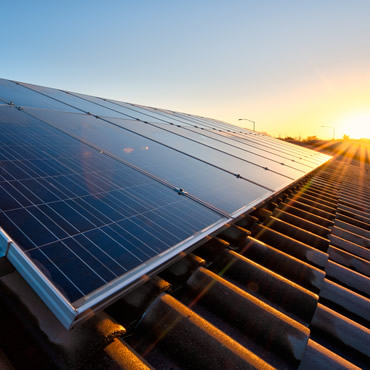Eight Top Tips For Saving Energy With Your Central Heating This Winter

If you are looking for a way to save energy with your central heating this winter, you have come to the right place. There are many ways you can do this, and you will find eight of them here.
Book an annual boiler service
If you’ve got a boiler, it’s important to book an annual service for it. Not only will it keep your heating system running efficiently, but it will help you save on energy bills.
Boilers tend to be less efficient as they age. Regular servicing will ensure your boiler stays in great condition and will extend its lifespan. Keeping your boiler in good working order also prevents it from breaking down, so it’s better to schedule an appointment now, before winter sets in.
While it might seem like an unnecessary cost, failing to get a boiler service could put you at risk. In fact, a faulty boiler can cause carbon monoxide poisoning. This could be a life-threatening situation, and may even lead to the death of the person in the house.
If your boiler is due for its annual service, it’s best to schedule it as soon as possible. Heating engineers get busier in the winter months, so it’s important to book an appointment early.
A faulty boiler is not only expensive to repair, but it can cause health hazards. Carbon monoxide can have negative effects on the body, including headaches, dizziness, and even unconsciousness.
Check your boiler settings
There are simple ways to save money on heating this winter, and many of these can be done without any extra effort. For example, you can install a timer that turns on the heating at 30 minutes before you need it. This way, you can only heat when you need it, and avoid overheating.
Another option is to lower the flow temperature of your boiler. Flow temperatures have a huge impact on how well your home is insulated, and they can help you save on energy. The lower the temperature, the more efficient your boiler will be, which means less gas and more savings.
However, it’s not always easy to determine what the ideal temperature for your boiler is. If you’re unsure, you can ask an engineer. Or you can search online for instructions on your specific make and model.
Optimising your boiler can reduce your carbon emissions by six to eight percent, saving you six to ten percent on your energy bills. It can also prepare you for a switch to a heat pump, which can cut your fuel bill by a third.
Set a heating schedule
One of the easiest ways to save money on your heating bills is to change your thermostat program. A well designed program will allow you to adjust your temperature settings accordingly to match your needs. In fact, a programmable thermostat can reduce your energy bill by up to 15 percent. For instance, you can set your system to maintain a high temperature of 65 degrees during the day and turn it down by 10 degrees at night.
Keeping your home at a comfortable temperature is the smartest way to go. If you are a light sleeper, consider adjusting your system to a slightly lower setting an hour before bed. This will make your home a nicer place to spend time during the winter months.
Choosing a programmable thermostat that is compatible with your home’s type of heating is also important. Programmable models with remote controls can be programmed to turn off the heater after a certain number of hours. Additionally, you can install a programmable thermostat that will automatically switch to energy-saving mode if you are away from home for an extended period of time.
Check your radiators are working properly
In order to save energy and keep your central heating system running efficiently, it’s important to periodically check your radiators. This is especially true in the Winter when the cold can make breathing difficult. If your radiators are not heating up, or if you hear odd noises, there could be a problem with your system.
One of the easiest ways to tell if your radiators are working is to listen for the “hissing” sound of water flowing through the pipes. The sound should be steady and if it’s not, you may have a leak.
Checking your radiators is a great way to prevent a major breakdown. However, it can also be a pain. There are plenty of reasons why your radiators aren’t heating up, and fixing them can be expensive. Luckily, there are a few simple tricks you can do to get your system back up and running.
The first is to make sure your thermostatic valves are on the right setting. If they’re on the wrong temperature, it will result in your radiators not heating up. They should be set at about 7degC to avoid freezing the pipes.
Utilise your thermostatic radiator valves TRVs
Thermostatic radiator valves (TRVs) are one of the most popular heating controls on the market. Having them in your home could save you up to 40% on your energy bill.
TRVs allow you to control the heat in individual rooms. This means that you can turn the heating down in rooms that are rarely used. They also reduce the risk of frost damage and mould.
TRVs work by changing the flow of water in a radiator depending on the room temperature. When the temperature reaches a set point, the valve will open or close.
TRVs are available in various designs and finishes. It is important to choose the right type for your home. You can choose straight valves for homes with straight pipework or angled valves for homes with pipes coming out of walls or floors.
There are two main parts of a thermostatic radiator valve: the head and the body. The head is a cylindrical shape and is attached to the valve’s body.
Unlike manual radiator valves, thermostatic valves automatically self-regulate the flow of hot water in a radiator. This ensures that you never overheat a room.
Perform an audit of your home
If you are looking for ways to save energy with central heating this winter, it’s a good idea to perform an audit of your home. This is not only a great way to reduce your utility bills, but also helps to fight climate change. Performing an energy audit can identify areas in your home that require improvement and suggest ways to make these improvements.
A good energy audit will include testing. This includes a blower door test to identify leaks and ductwork, a furnace or water heater check, and an evaluation of the home’s heating and cooling systems.
During the inspection, an infrared camera will be used to spot areas in the walls and ceilings that need insulation. You may need to replace your furnace or install a more efficient model.
After the audit is completed, a detailed report will be provided. The report will show where you are wasting money and where you can save.
In addition to saving you money on your utility bill, an energy assessment can identify health and safety concerns, as well. These concerns include moisture in the walls and ventilation system, which can lead to mold and other health problems.
Don’t leave your heating on all day
Keeping your central heating on all day may seem like a good idea, but it can be more expensive than you think. According to the Energy Saving Trust, keeping your home warm all day requires more energy than turning it off, which isn’t a cost-effective option.
You can use a smart heating control system to help save energy. These types of systems use a programmable timer or economy meter to determine the most appropriate times to run the heating.
If you’re going to be gone all day, you’re best off leaving the heating off. Leaving the furnace running all day will use more fuel and will also cause it to work harder. However, if you’re home during the day, turning the heating off and on is a good idea.
A well-insulated house can use less energy than a poorly insulated home to keep the temperature constant. That’s because a well-insulated house will not lose as much heat as a poorly insulated one.
The Energy Saving Trust recommends leaving the heating on only for the most crucial time. This is particularly important if you have two working adults in the household. Set the heating to come on at half an hour before they arrive and again at midday.
Use a smart thermostat
If you’re looking to save energy with your central heating this winter, look no further than a smart thermostat. These sophisticated devices allow you to monitor your energy use and adjust your temperature according to your preferences. You can also get detailed statistics on how your home is using its energy.
Smart thermostats have a variety of features, including remote sensors that can detect occupancy in different rooms. They can also adjust the temperature of the room when a person arrives home. Many of these products are Energy Star-certified.
Smart thermostats can also track the amount of time your heating system is on, giving you the chance to save more. You can even set up a schedule to automatically turn down your heat when you’re not at home. Depending on your situation, you can save up to eight percent on your utility bills with a smart thermostat.
A quality thermostat will be Wi-Fi-compatible, meaning it can be easily controlled from your laptop or home tablet. Some models are compatible with Apple products, so you may be able to control it via your smartphone.

